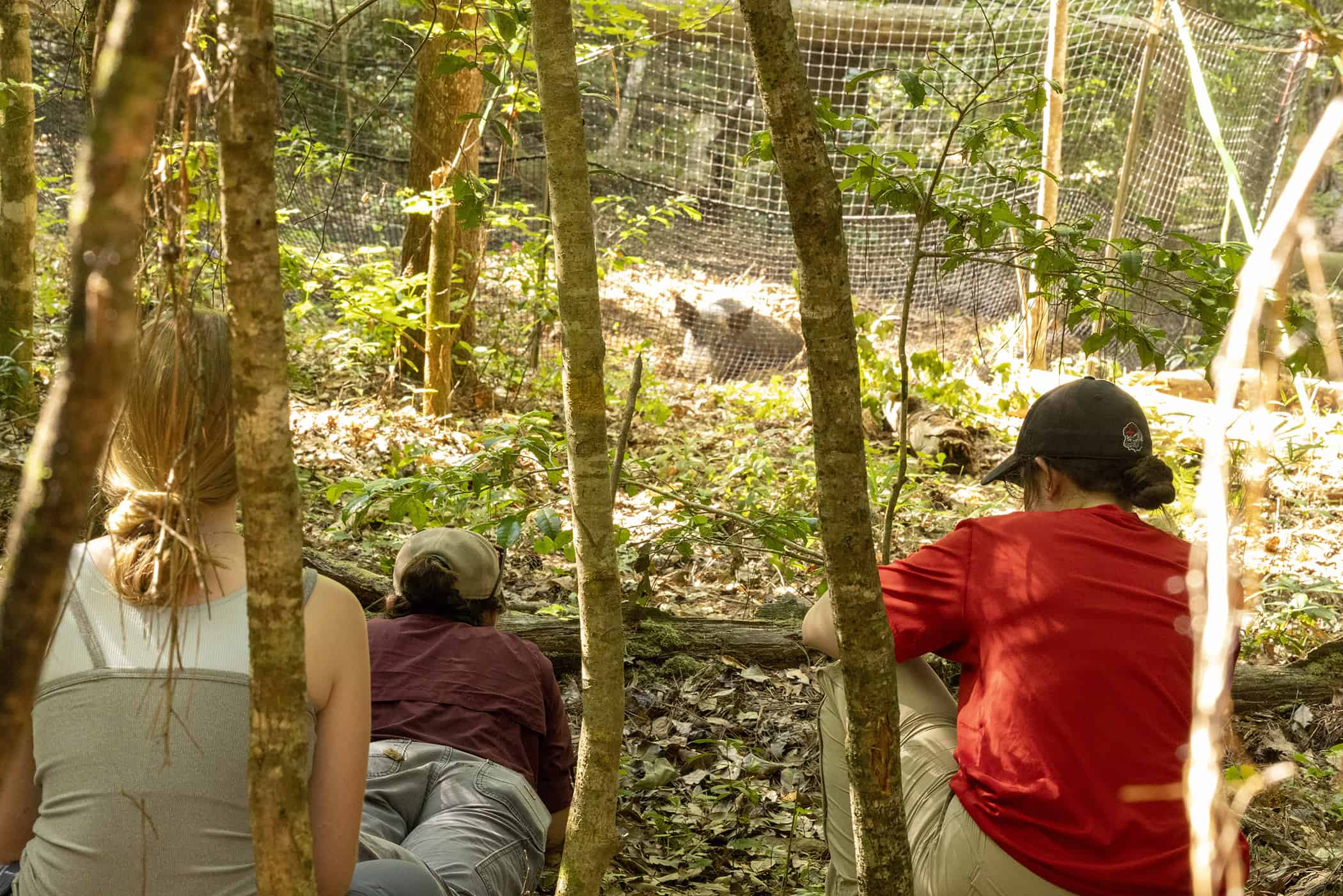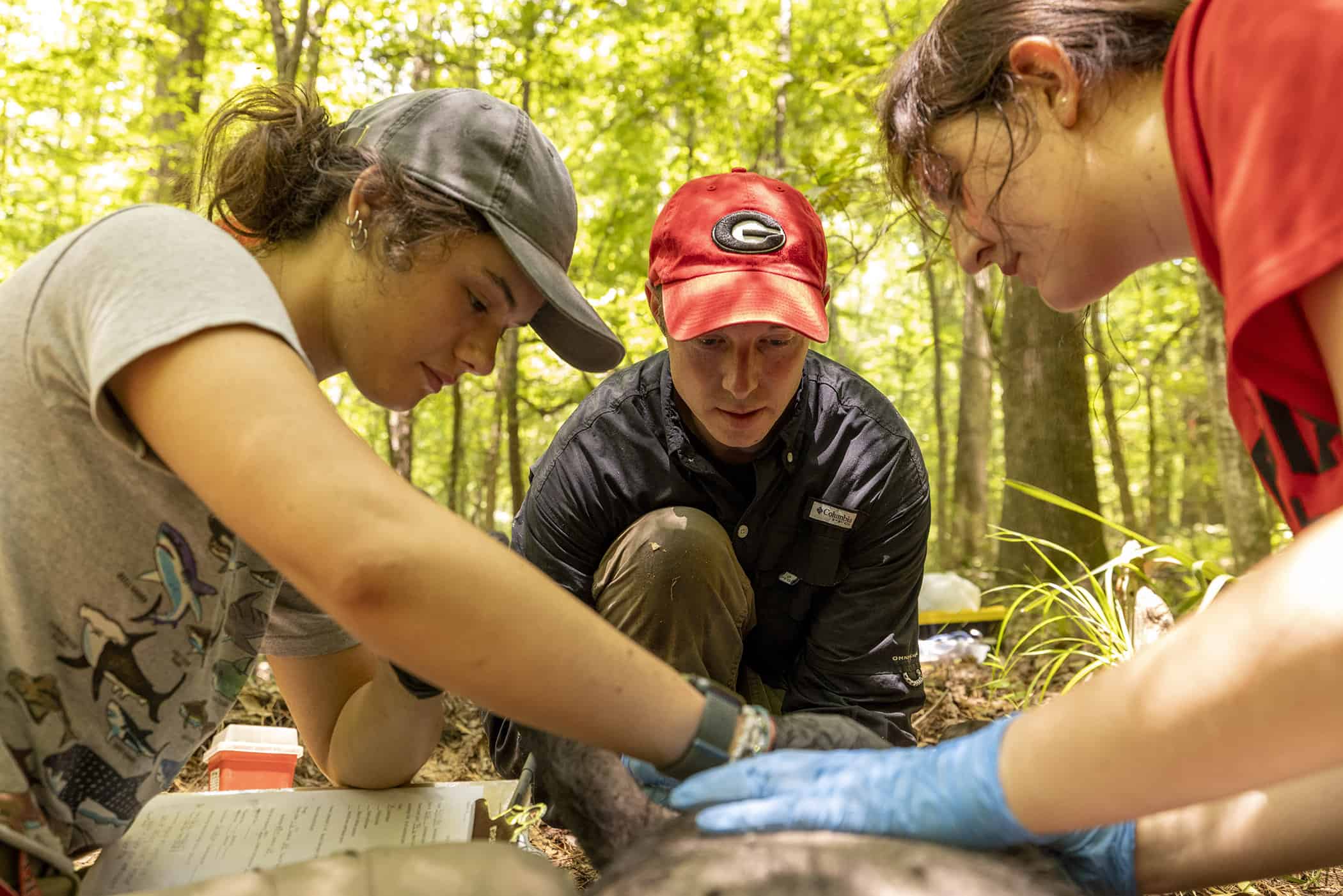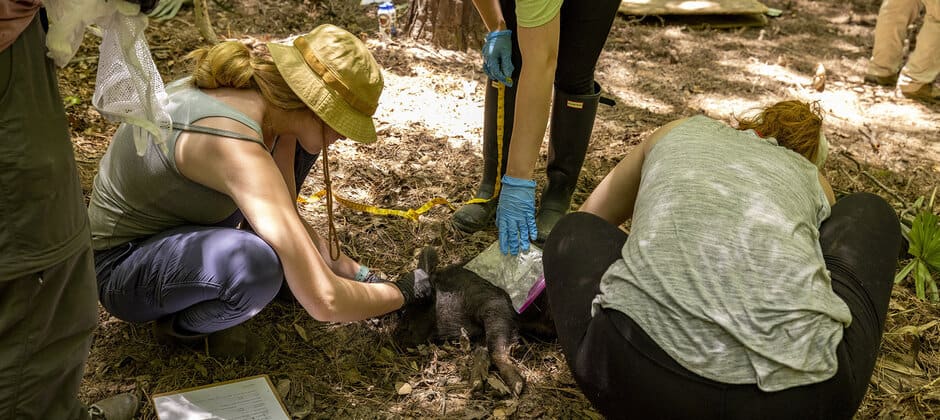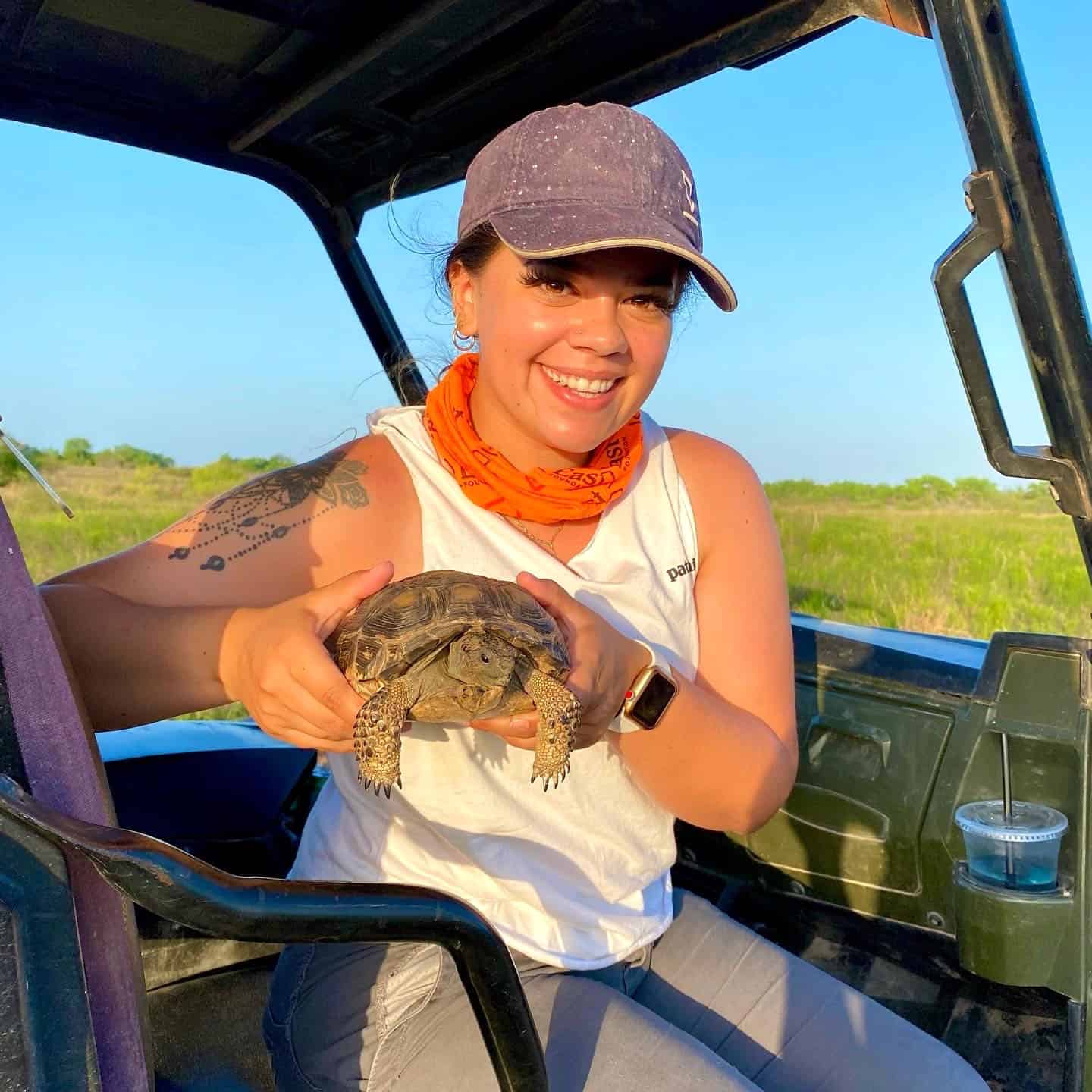Share this article
Learning about wild pig movements can aid management
By understanding how weather and other factors affect wild pig behavior, managers can better understand when and where to target mitigation techniques.
“Pigs are such a generalist species, and a lot of studies on animal movements—and pigs are no exception—traditionally focus on broad temporal scales,” said James Beasley, an associate professor in the Savannah River Ecology Lab and Warnell School of Forestry and Natural Resources at the University of Georgia.
But wild pigs’ (Sus scrofa) rooting and trampling behavior is destructive to the landscape, and researchers would like to know what they’re doing over shorter periods of time. “Knowing what pigs are doing on a more real-time basis is important for maximizing the efficiency of management,” he said.
Beasley’s master’s student Lindsay Clontz led a study published in Pest Management Science to find out how factors like temperature, barometric pressure, habitat type and sex influenced wild pigs’ home range size and movement over weekly time periods. Then, they looked at the shape of home range sizes and if different landscape attributes change the characteristics of their home ranges.

Students wait as a wild pig falls asleep so they can begin collecting data on the animal. Credit: Dorothy Kozlowski/UGA
To conduct the research, the team, including collaborators with the USDA-APHIS National Wildlife Research Center, collected GPS data on 49 individual wild pigs that were tracked across their annual cycle in the Savannah River Site in South Carolina. From that data, the team generated home range estimates and core area estimates for the pigs.
Then, they categorized the pigs’ habitats into two broad categories: bottomland hardwood swamps and upland pine plantation. “These are dominant habitats in much of the Southeast, and we often think of those as representing two different levels of quality of habitat for species like pigs,” said Beasley, the senior author on the paper. “Pigs are very wetland dependent, and often bottomland hardwood habitat provides access to cover, water, and food, and so they are more optimal habitats for pigs compared to pines.”
The team then overlaid other variables from meteorological records over GPS location data in these two habitat types.
They found pigs had smaller home ranges in bottomland hardwood habitat because they didn’t need to move as far to find food, water and cover. Females, tended to move around even less than males, and they showed a stronger dependence on bottomland habitat. Beasley said that’s because females are more tied to resources, while males tend to cover larger areas to find mates.

Jim Beasley joins undergraduates Adrienne Risk and Hannah Vesper in collecting data from a sedated wild pig. Credit: Dorothy Kozlowski/UGA
The researchers also discovered that pigs responded to warmer temperatures because they are poor thermoregulators. As the temperature got warmer, home range size tended to shrink. In addition, when there was low pressure, which is typically related to adverse weather, pigs condensed their movements and concentrated their activities, likely finding cover.
The team also made some discoveries about the pigs’ home range shape. While their home range is usually mostly circular, they found that in riparian areas bordered with hardwoods, they have more elongated home ranges as they are concentrating movements along streams.
These findings have implications for pig management, he said. For example, the data suggests that management activities like aerial shooting might be more effective when temperatures are a bit cooler and weather is generally more favorable as pigs are moving around a bit more. The findings also suggest that in southern habitats where pockets of hardwoods are often embedded within a matrix of less favorable pine habitat, female movements will often be more concentrated along riparian corridors, where they will likely have much more constrained home ranges.
The home range shape near riparian corridors suggest that management efforts should be concentrated along streams. And further, managers should focus on females that are not moving as much and are concentrated in these areas, especially since they are the one producing more pigs.
“One of the challenging things with pigs is that they’re such ecological generalists,” Beasley said. “I think what’s interesting here is that despite this we do still see some level of predictability in their movements. That’s something managers can take advantage of to improve efficiency of management programs.”
Header Image:
Students keep a sedated wild piglet cool and monitor its body temperature while they collect data.
Credit: Dorothy Kozlowski/UGA








